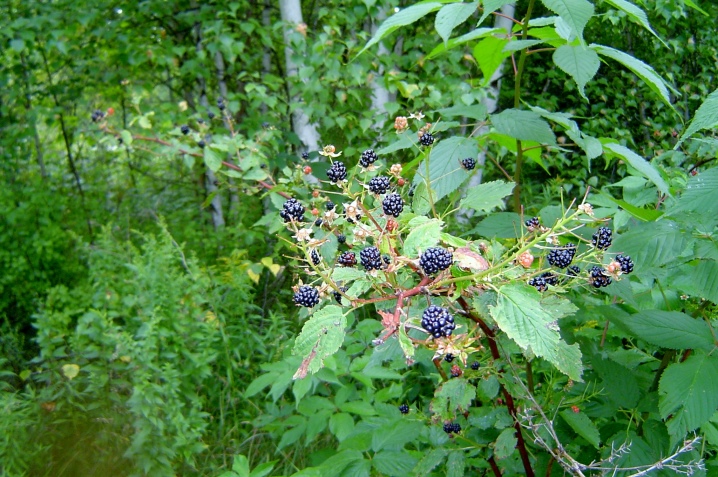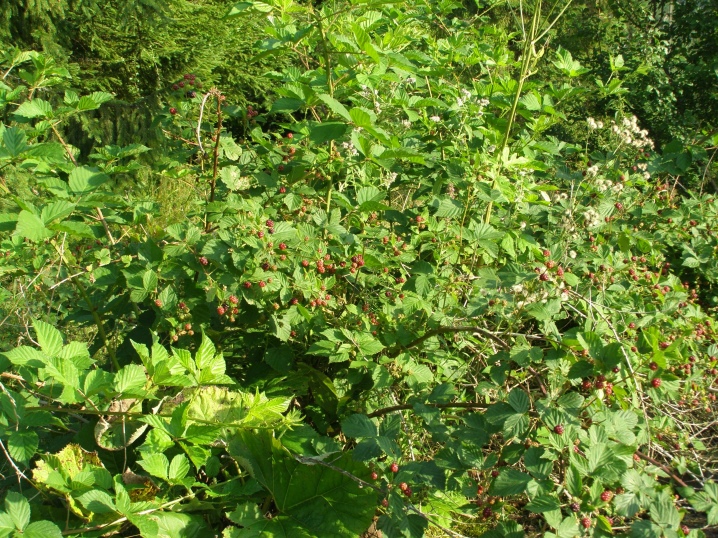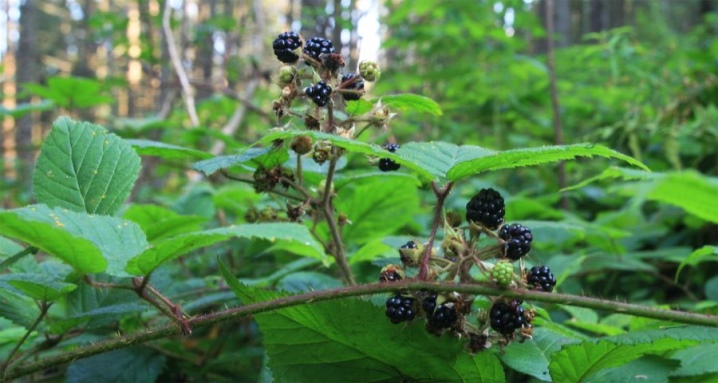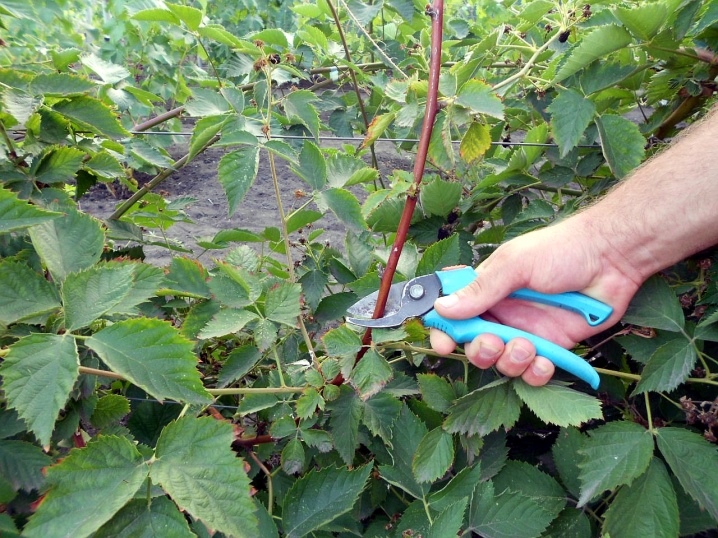All about the forest blackberry

After reading the article, you can find out everything you need to know about the forest blackberry. It will become clear in which forests this wild berry grows, and what the shrubs look like. And also it will be possible to figure out how to grow such a culture in your country house.

general description
It should be pointed out right away that the forest blackberry, according to the exact botanical classification, is not a shrub, but a semi-shrub. She belongs to the pink family, and therefore her "close relatives" are:
-
Cherry;
-
bird cherry;
-
Rowan;
-
strawberries;
-
peach;
-
Apple tree;
-
pear;
-
garden rose;
-
rose hip;
-
hawthorn;
-
plum.


In favorable climatic places, wild blackberries can grow very vigorously. Often, its thickets, in general, become an insurmountable obstacle. Formally, this plant belongs to the deciduous group. However, blackberry leaves can remain on the branches until the end of winter. The foliage in summer is dark green and shiny; with the onset of autumn, it turns brown or takes on a reddish-brown tone.
The height of the forest blackberry does not exceed 1 m. However, the length of the shoots can be much longer. In different cases, they either lie on the ground or hang in an arched manner.

The bark is covered with a large number of thorns. They can vary greatly in length and geometry.
You can expect the appearance of flowers in early summer. Flowering can continue until early July. The forest blackberry blooms very luxuriantly, but the flowers themselves are small. The berries are edible. They will ripen by the end of summer and the beginning of autumn. Outwardly, these bluish-black fruits are similar to raspberries.
Blackberry root complex actively forms shoots. Some roots are quite long.

Where and how does it grow?
You can meet blackberries in the forest everywhere in temperate and warm climates. In our country, it is found both in the vicinity of Arkhangelsk and in the North Caucasus. It also grows in North America. There, blackberries are even grown on an industrial scale.
Blackberries are especially widespread in the middle lane. There she can be seen in wet flooded meadows. And also this species loves to grow near streams and rivers. Blackberry bushes are also among the first to grow in clearings. The edges of the forest are no exception.
The plant can tolerate quite a lot of shade. However, it develops much better in good lighting. Demanding ground is low. In nature, forest blackberries can grow on dry and wet, acidic and moderately alkaline soil.
In many cases it comes to the ground earlier than other plants and as a “pioneer” it strengthens and improves the soil.

You can often see her:
-
in ravines in the middle of the forest;
-
in river floodplains;
-
next to the swamps (although it does not grow on the swampy areas themselves).
Stems, like raspberries, develop in a two-year cycle. In the first season, they gain weight and lignify. The second season is accompanied by the formation of berries, and ends with drying and withering away of the branches. Flowering and fruit formation are not separated even to the slightest degree. Therefore, the bushes look very beautiful and picturesque at the height of the summer season.

The flowers are white or slightly pink in color, their cross section is about 20 mm.
In cultural planting, forest blackberries are most often used for:
-
hedge formation;
-
creating curbs;
-
rock gardens.

How to grow?
Blackberry flowers are self-pollinating and attract bees. Therefore, for its cultivation, artificial pollination is extremely rare. It should be borne in mind that this plant is divided into erect and creeping forms. The approach to growing them is predictably different. It is imperative to take into account the characteristics of a particular variety.
For any cultivated blackberry, definitely preferred the most illuminated places. Only slight shading is allowed. This is justified with prolonged growth and the impossibility of preparing for winter. Berries grown in the shade will still be tasty and large. It is very important to take care of the fertility of the soil and its solid drainage.
Blackberries need intensive irrigation. But an excess of moisture for her is no better than a lack.

If cold winters are likely, then you will have to cover the plant. It is worth choosing varieties that are as resistant to cold as possible. Disembarkation is mainly carried out in spring or autumn.
The size of the planting holes should correspond to the size of the bush. The bottom of the hole must be saturated with manure. The newly planted seedling is cut to a height of 30 cm and gently watered. The row spacing should be 2.5 m. The recommended gap between individual bushes is 0.5 m less.

It must be remembered that blackberry bushes are tall and can stretch up to 3.5 m.Therefore, they need to be planted only where there will be no interference (and where such a powerful plant itself will not interfere with anything). The correct shaping of the bushes is very important. It is best to use a simple fan-shaped technique, where the plants are directed to one or two sides. The overgrown shoots are tied up.
Watering the blackberry is required in dry weather. If there is enough rainfall, it can usually be ignored. Anyway it is worth loosening the ground and removing weeds. In the spring, the plant is fed with mineral compounds. For mulching, rotten humus is used.
With full-fledged spring pruning in the fall, you can limit yourself to removing obsolete and deformed shoots. Rejuvenation will allow you to get a new crop every year.

Preparing for winter involves bending the branches to the ground. Then you can take full advantage of the natural snow shelter. Erect bushes bend down gradually so as not to damage anything.
It is possible to stimulate the development of the underground part of the bush by removing the inflorescences in the first year. Fertilizing and watering is carried out as desired. It is possible to combine and separate these procedures. Moisture irrigation (usually at the end of October) is required. Its specific dates may vary depending on the weather.

If fertilizer is laid after watering (this is exactly what they do in most cases), it should be used in the fall for 1 sq. m 50 g of superphosphate and 25 g of potassium sulfate. From above, the bookmark is mulched with humus. It is categorically impossible to use nitrogen compositions in the fall. It is necessary to prepare for a winter shelter a week before the onset of freezing temperatures. If you cover the plant directly during frosts, the fragility of the branches can cause a lot of inconvenience.














The comment was sent successfully.